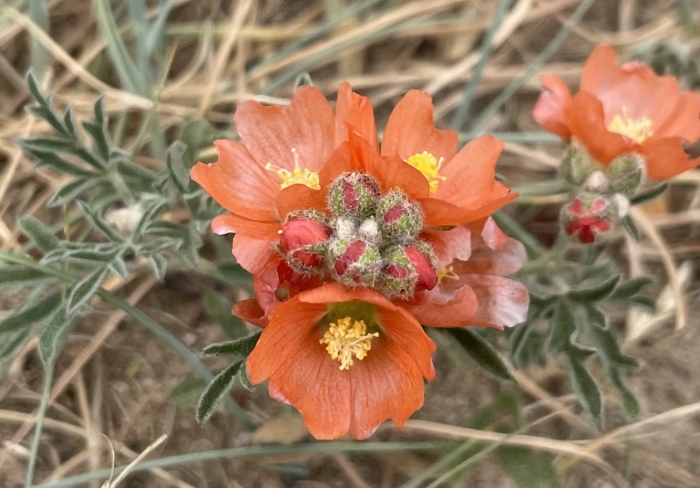Scarlet Globemallow
(Sphaeralcea coccinea)
Scarlet Globemallow (Sphaeralcea coccinea)
/
/

lazarus
CC BY 4.0


















































Estimated Native Range
Summary
Scarlet Globemallow is valued for its drought tolerance and vibrant flowers, making it suitable for xeriscaping and naturalistic plantings in arid regions. It is often used in wildflower gardens, as ground cover, and for erosion control. This plant thrives in full sun and requires minimal water once established, preferring well-drained soils. It is relatively low-maintenance, but gardeners should be aware of its potential to spread via rhizomes.CC BY-SA 4.0
Plant Description
- Plant Type: Subshrub, Herb
- Height: 1.5-2 feet
- Width: 0.5-1.5 feet
- Growth Rate: Rapid
- Flower Color: Red, Orange
- Flowering Season: Spring
- Leaf Retention: Deciduous
Growth Requirements
- Sun: Full Sun
- Water: Low
- Drainage: Fast, Medium
Common Uses
Bee Garden, Bird Garden, Butterfly Garden, Groundcover, Hummingbird Garden, Low Maintenance, Potted Plant, Showy Flowers, Street Planting
Natural Habitat
native to the open prairies and desert scrublands of the central and southwestern United States
Other Names
Common Names: Copper Mallow, Moss-Rose, Orange Globe-Mallow, Prairie Mallow, Red False Mallow, Scarlet Globe-Mallow, Scarlet Mallow, Orange Globemallow, Red Falsemallow, Prairie-Mallow
Scientific Names: , Sphaeralcea coccinea, Malvastrum coccineum, Sphaeralcea coccinea var. dissecta, Sphaeralcea coccinea subsp. dissecta, Malva creeana, Malva coccinea, Malvastrum micranthum, Sida dissecta, Cristaria coccinea
GBIF Accepted Name: Sphaeralcea coccinea (Nutt.) Rydb.